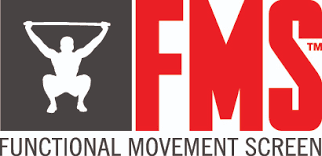Kinesiotape is a specialized type of elastic tape that is used for many therapeutic purposes. It provides support, alleviates pain, and promotes healing in various areas of the body. Unlike traditional athletic tape which can restrict movement, kinesiotape is designed to be stretchy and flexible, allowing for a full range of motion.
The tape works by exerting a gentle pulling force on the skin, which has several effects on the body. First, it creates space between the skin and underlying tissues, which helps to reduce pressure and inflammation. This in turn alleviates pain and promotes better circulation and lymphatic drainage.
Second, kinesiotape activates mechanoreceptors in the skin, the sensory nerve endings that respond to touch and pressure. By stimulating these receptors the tape is in effect sending signals to the brain that help override pain signals, providing a sense of relief and improving proprioception (awareness of body position and movement).
Additionally, kinesiotape provides support to muscles, tendons, and joints, helping to stabilize and protect them during physical activity. Kinesiotape can also help to correct movement patterns and enhance muscle activation, improving performance and preventing further injury.
When it comes to the low back, identifying the source of pain, such as the sacroiliac joints, is key to applying kinesiotape. Two strips are placed on either side of the spine to target the paraspinal muscles, while a third strip is applied across the point of pain. By activating the touch-sensing nerve fibers, or mechanoreceptors, the tape helps reduce pain and discomfort. Again, unlike traditional athletic tape, kinesiotape allows for unrestricted movement while offering support to the muscles and joints.
Kinesiotaping is not limited to the low back. It is also effective for neck pain. Applying kinesiotape to the base of the neck and along the sides, including the paraspinals, can help relax neck muscles and relieve pain. The stimulation of mechanoreceptors makes kinesiotape a non-invasive treatment option for neck pain.
Another condition that can be temporarily addressed with kinesiotape is tennis elbow. This overuse injury affects the outer part of the elbow and is caused by repetitive motion. Kinesiotape can be applied in two patterns to provide pain relief and support. The first pattern involves applying the tape across the elbow and around the affected area, while the second pattern starts above the problem area, goes down the arm, around the wrist extensors, and then back up to the elbow. While kinesiotape may not offer a permanent solution, it can provide temporary relief and support, allowing people to continue their daily activities.
What is the Gate Theory of Pain and how is it used?
The phrase “walk it off” commonly used in sports actually has scientific backing. According to the Gate Theory of Pain, the brain can only process a limited number of signals at a time. When an individual engages in physical activity, movement signals are stronger and larger than pain signals, so they can effectively override the perception of pain. Walking or engaging in physical activity also increases blood flow and oxygen to the affected area, aiding in the healing process. Additionally, movement stimulates the release of endorphins, natural painkillers produced by the body. While “walking it off” may not be suitable for all injuries, it can be an effective strategy for minor pain or discomfort.
Understanding the Gate Theory of Pain helps explain why rubbing areas that hurt provide relief. Our bodies have different types of nerve fibers, including nociceptors that sense pain and mechanoreceptors that sense touch and movement. The gate theory suggests that our brains can only process a fraction of the signals our body sends, and the loudest signals make it to our consciousness. When we rub an area that hurts, the touch signal sent by the mechanoreceptors acts like a megaphone, overpowering and canceling out the pain signal. This allows the touch signal to reach our consciousness, providing relief and alleviating pain. Massage, chiropractic, and manual therapy also stimulate mechanoreceptors, sending strong touch signals that can override pain signals and offer pain relief.
Kinesiotaping and understanding the Gate Theory of Pain provide valuable insight into pain management and relief. By utilizing kinesiotape to activate touch-sensing nerve fibers, individuals can experience relief in the low back, neck, and even conditions like tennis elbow. Additionally, understanding Gate Theory helps explain why engaging in physical activity and applying touch to the affected area can help alleviate pain. These techniques offer non-invasive solutions to pain, empowering individuals to live with passion rather than pain.


